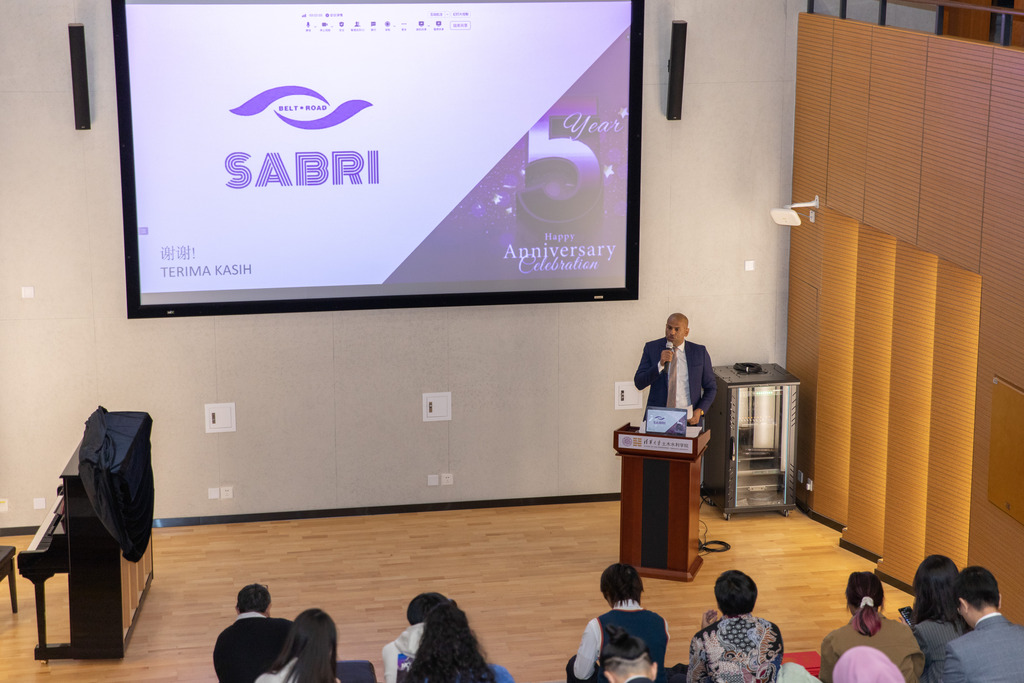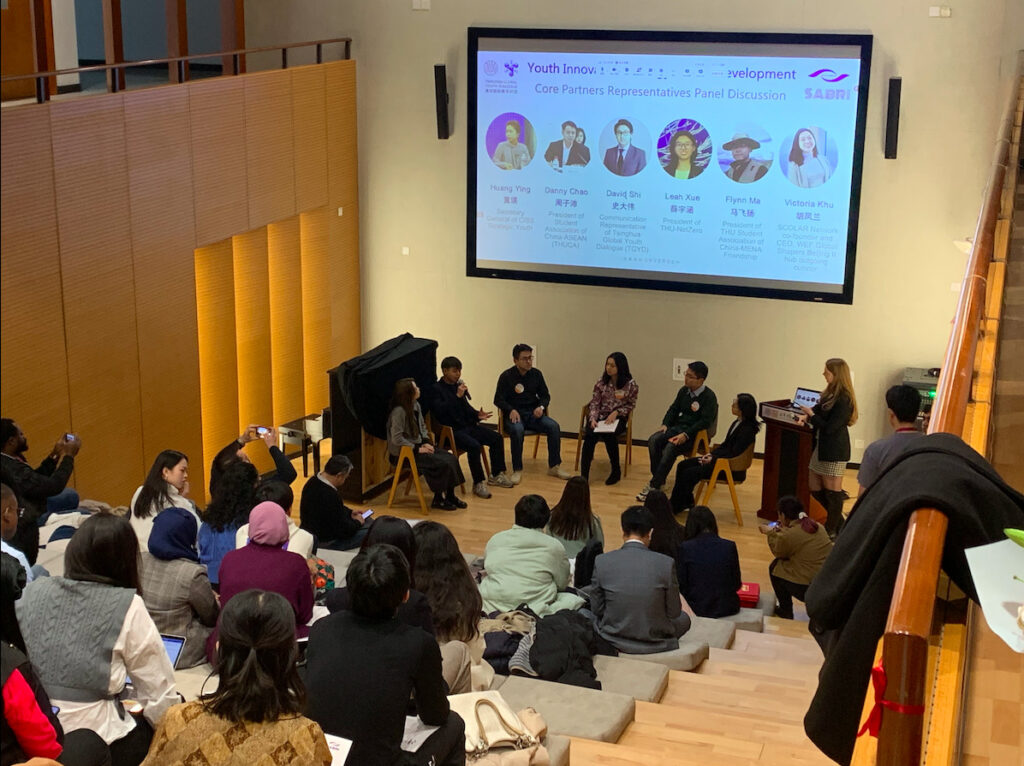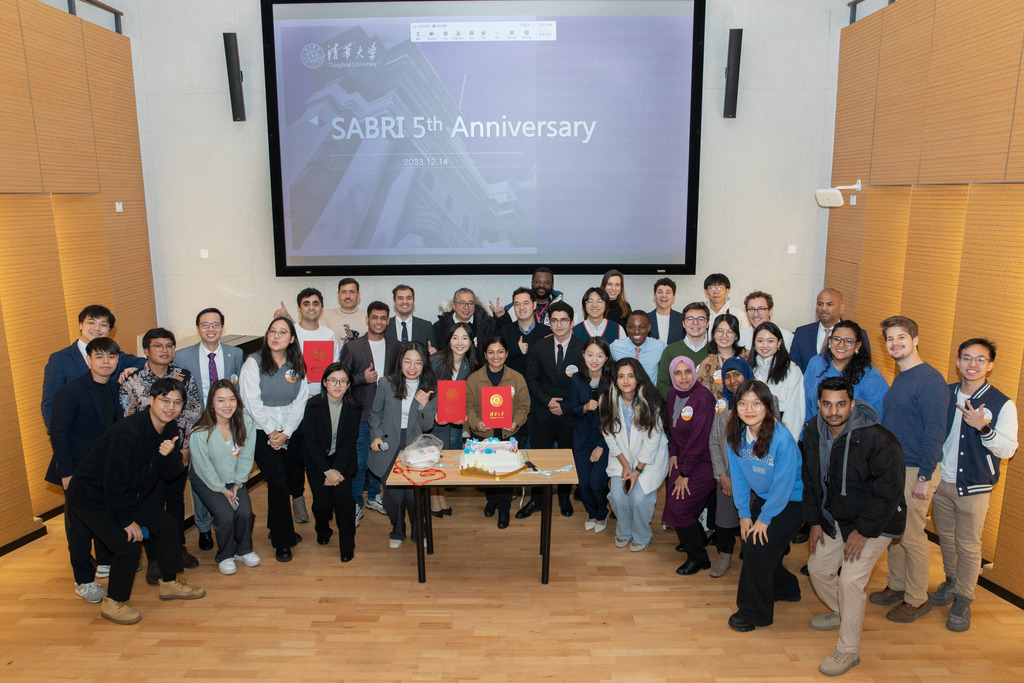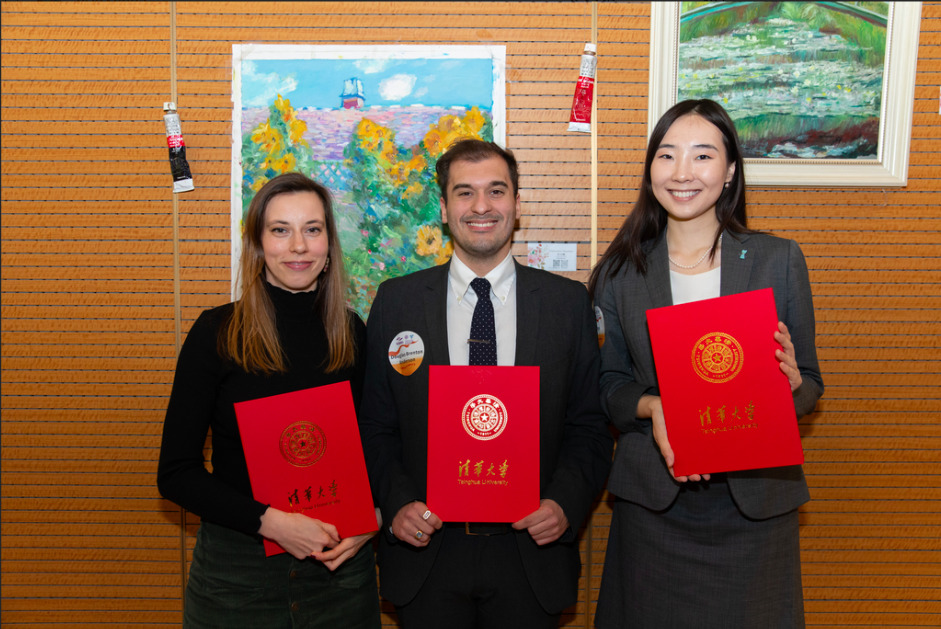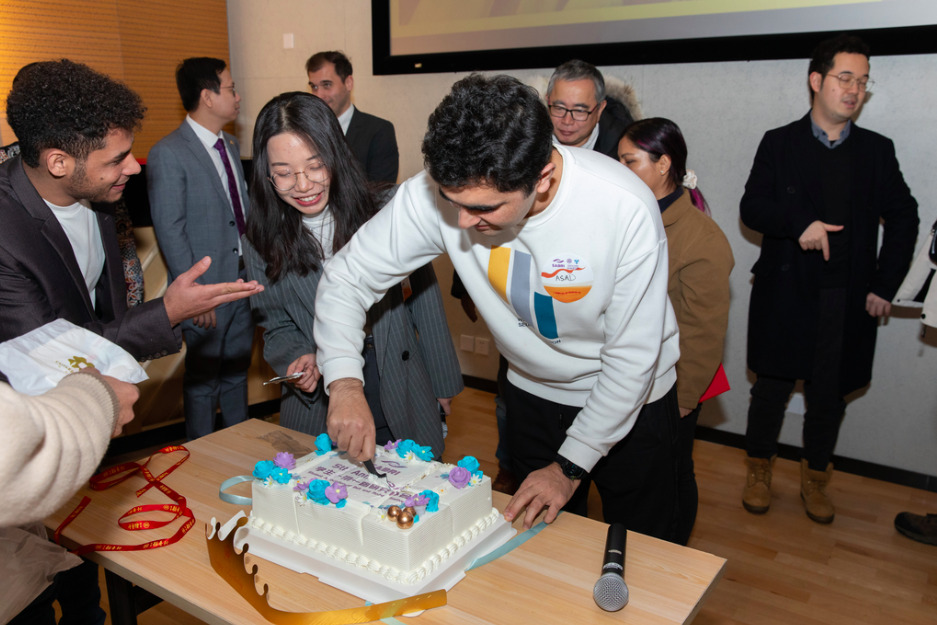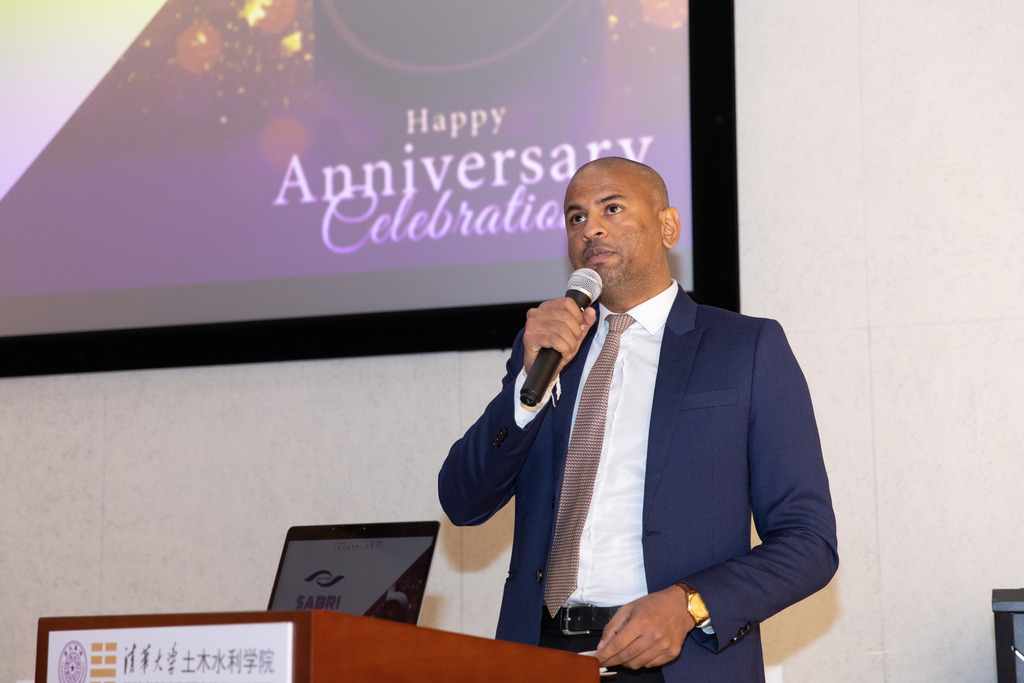Charting BRI Success: BRISL Director Addresses Tsinghua University's BRI Students Association (SABRI) on its 5th Anniversary
The Director of BRISL Yasiru Ranaraja, spoke at the 5th Anniversary of Students Association of the Belt & Road Initiative (SABRI) of Tsinghua University in Beijing, hosted by the SABRI, Tsinghua International Youth Dialogue, and Center for Global Competence Development. The event focused on the 10-Year Success of the Belt & Road Initiative, and SABRI’s development on its 5thAnniversary. The program included speeches, roundtable dialogues, success stories of Belt and Road alumni, and an award ceremony. SABRI, established in 2018, is considered as one of the world’s largest student-led organization on BRI, with over 1,500 members from 80+ countries. The conference featured keynote addresses from:
- Dr. Zhiqin Shi Professor of the Belt & Road Initiative Research institute, School of Social Science
- Dr. Runzhou Zhang Deputy Director of the Center for Global Competence Development
- Ms. Afifa Shajia Awais The Education Attaché of the Embassy of Pakistan in Beijing
Youth representatives engaged in roundtable discussions, and accomplished alumni shared insights into their post-graduation successes. The event highlighted the Belt and Road Initiative’s global impact over the past decade and the role of youth in international cooperation and development.
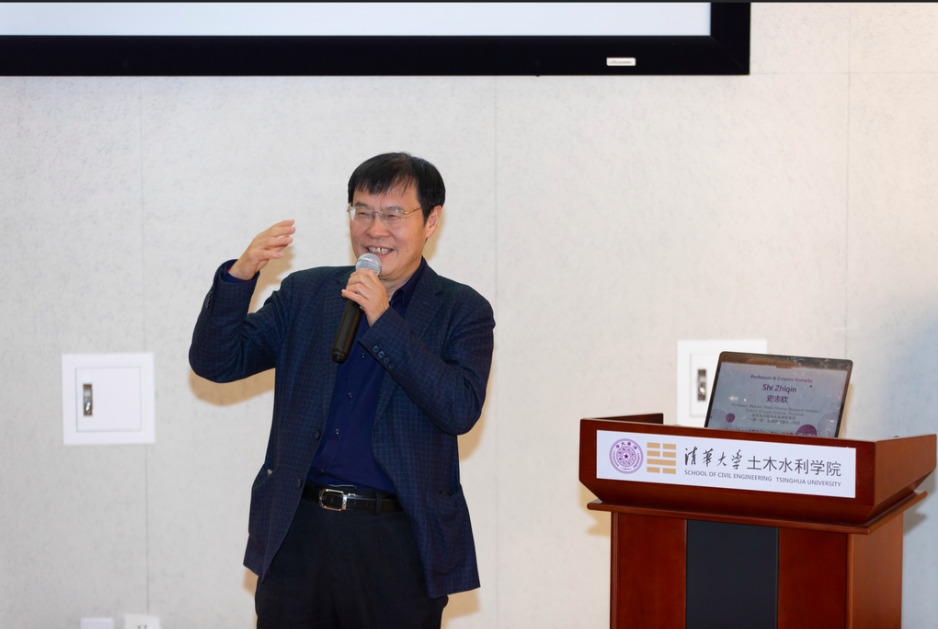



Full Speech Transcript of Yasiru Ranaraja from BRISL:
Navigating Success Along BRI: The case of Sri Lanka
Ladies and gentlemen, esteemed guests, and fellow participants, and the Dynamic Team of the SABRI.
Today, I like to explore a journey of strategic foresight, economic resilience, and the transformative power of the Belt and Road Initiative (BRI) case of Sri Lanka.
Sri Lanka and the Port of Hambantota is known globally with the fabricated narrative ‘Debt Trap’ which was since then been challenged by many globally renewed academics including local Sri Lankan scholars.
Our story of BRISL begins at a time the mainstream media was the only from of information source for vast majority. Our organization BRISL acted as a communication model to serve the outside critics and later on republishing BRI related information and insights.
However, in the last ten years, the redirection of investments under the BRI which included the Hambantota Port, Colombo Port City, and the Colombo Port, is a testament to the visionary leadership not only for Sri Lanka but also for regional development.
Subtopic 1: Navigating Success of Port Infrastructure Development.
The BRI starts with the 2013, the Colombo Port South terminal, with a $400 million investment by CMPort of China, commenced operations of the CICT terminal at the Colombo Port.
Fast forward to today, and the Colombo International Container Terminal managed by the CMPort Holding, handles over 40% of the total volumes at Colombo Port.
What sets it apart is its capability to accommodate Ultra Large Container Vessels (ULCVs), making it the most efficient terminal in the region. This success is not a stroke of luck but a result of forward-thinking initiatives that positioned the port to attract mega-ships and safeguard its competitiveness.
Early business cooperation’s between CICT terminal at the Colombo Port not only benefited Chinese organizations it also, created jobs for the locals and paid over $200 million in royalties to the Sri Lankan government. Moreover, sitting below the growing market of India the Chinese investment at the Colombo Port convert over 40% transhipments to the Indian market at a globally competitive rate benefitting the Indian consumers.
Subtopic 2: The Real Debt Challenge
However, as Sri Lanka basks in the success of its ports, it struggles with a pressing issue – a mounting national debt, and its external debt standing at $36.09 billion as of March.
Out of which a significant portion of this debt, $5 billion, is owed to China.
However, the Hambantota Port lease, often portrayed as a “debt trap,” tells a different story.
The 70% stake leased for $1.12 billion in 2014 to CMPort, served as a strategic move, allocating funds to strengthen reserves and repay high-interest International Sovereign Bonds (ISBs) held by Western entities which account for over 40% of external debt in Sri Lanka.
This, some argue, saved Sri Lanka from a potential Western debt trap in 2016.
So, as many say, the Hambantota Port lease agreement was not a “debt to equity swap” because the Sri Lankan government didn’t default in its Hambantota Port loan and still serves it, while it used the money from the Hambantota Port lease agreement to strengthen its currency and pay a portion of ISBs to western bond holders.
Subtopic 3: The Prospects of BRI for Sri Lanka
Now, let’s set our sights on the broader picture – the prospects that the Belt and Road Initiative holds for Sri Lanka. The critical infrastructure assets constructed under the BRI are expected to drive long-term economic growth.
With smart utilization, these assets can fuel economic expansion, emphasizing the notion “it is not debt but assets that fuel economic growth.” Sri Lanka’s trade with China has flourished since the early 2000s, promising more exports and collaboration with Chinese enterprises operating in the country.
Moreover, Colombo is reputed as the regional business hub, where most of the Chinese enterprises opened their regional headquarters.
Conclusion: A Transition to Broader Horizons
As we dive into the evolving landscape of the BRI, we witness a significant transformation, from a primarily bilateral cooperation model to a more resilient and decentralized system.
We as organizations outside of the official government structure, continue to strengthen, people-to-people cooperation and policy coordination which are two of the important branches out of the five pillars of BRI.
The BRI’s future, marked by a renewed focus on the Silk Road, promises to ensure its continued role in shaping global economic and developmental initiatives and it extends to new cooperation models as Global Development Initiative, Global Security Initiative, and Global Civilisation Initiative. Which are normative models of “Xi Jinping Thought on Socialism with Chinses Characteristics for a New Era”
Despite concerns arising, it is imperative to address the misconceptions, highlighting the collaborative and multilateral nature of the BRI awhile paving room for factual argument.
In conclusion, Sri Lanka stands at a crossroads, guided by strategic investments and initiatives that pave the way for economic growth.
The Belt and Road Initiative, with its evolving nature, holds the promise of broader horizons, not just for Sri Lanka but for the entire global community. As we navigate these waters, let us embrace the opportunities that arise and work towards a shared future of prosperity and collaboration.
Thank you.
